I’m delighted to report that, on the second attempt, Babbage the Bionic Bear was successfully dropped from just over 39,000 metres, with a video of the “jump” taken by the capsule camera, and with both payloads recovered. So all of the main mission objectives were achieved!
The first attempt was with Eben and Liz from the Raspberry Pi Foundation, fellow balloonist Anthony Stirk, and John Jackson from Radiometrix. Both Babbage and the capsule carried the new NTX2B radio transmitter from Radiometrix, and this was the first time they’d been flown under a weather balloon. Unlike the older NTX2 model which is only available in 2 frequencies, the NTX2B is factory-programmable across a wide range. With the number of amateur weather balloon flights these days this will be a great help in reducing frequency conflicts.
This launch was probably the most difficult I’ve done, with strong blustery winds that just wouldn’t let up, as you can see in this photo

and video of the preparation
The flight itself went fairly well, with Babbage apparently trying to make his escape early
but when it came time for him to actually jump, at 39km, nothing happened. Instead both capsule and bear continued upwards eventually peaking at an impressive 41,109 metres (well above the calculated burst altitude of 39.5km), breaking the record for “highest amateur image transmissions”, before having a soft landing in a field
and then being reunited with “parents” Liz and Eben
Once I got Babbage back home, I started looking into what had gone wrong. The cut-down software creates a log file and this showed that it had triggered correctly at 39km. Next I checked the cut-down circuit and that was connected and working normally. The only item left was the cut-down resistor, which is supposed to get hot enough to melt a nylon cord holding Babbage up. I tested this with the worn batteries from the flight, and it did melt nylon but not very quickly. I’d opted for small batteries in order to keep the weight down and give me the best chance of breaking 39km, but in doing so I compromised the power sent to that resistor. So knowing that the flight got to over 41km, I felt confident that I could increase the weight (thus reducing the burst altitude), meaning I could use more batteries, and larger ones, and drop the resistance, all of which mean more POWWWEERRR. Finally, I decided to bring the resistor inside the payload to stop it getting too cold, so it didn’t need to heat up so much. Predictions were looking good for the Monday, so I scheduled a second launch for then.
Monday was a much better day to launch – very little wind, rather warmer, and skies were clearer meaning better photos. Sadly Liz, Eben, Anthony and John couldn’t make it, but we did have the company of Greg and his team who launched their own flight before us. Here I am putting the back on the capsule:
The launch itself was very easy
and we soon set off in chase, briefly stopping near where Greg’s flight had landed so we could get a position for him. This time, and to my great relief, Babbage was released as scheduled when the GPS reached 39km, thus beating Felix’s altitude record (but not his skydive or speed records!) by 31 metres:
The capsule kept rising, this time up to exactly 41,000 metres when the balloon burst. About this time we saw that Babbage didn’t switch back to taking images, and this was because his SD card was dislodged when (I think) his parachute deployed. The result was that the video he took of his leap was truncated, and he didn’t take any images of his descent. However he did continue to send telemetry back to the ground.
By this time we’d stopped for petrol, near Shaftsebury in Dorset which is roughly where we expected him to land.
As we watched, the car 3G cut out as the SIM card ran out of credit! All the computers and tablets in the car run from a MiFi device which shares the 3G signal over WiFi, and I had to topup the card before we could continue! Fortunately I did that before Babbage landed (he was coming down quite slowly as his parachute was a tad larger than necessary) and we managed to upload his position before he disappeared at an altitude of about 500m. We then set off in pursuit, picking up his radio signal as we got closer. We could get within 50 metres or so by road, but there was no obvious route to get to him from there, so we backed up and parked near to the gate to the field. Here you can see where he landed and the path we took back towards the car:
With Babbage safely back in my hands, it was time to set off back to where the capsule had landed. This was another easy recovery, about 100 metres from a road:
So, both payloads recovered, and a video of Babbage breaking that record – here in its entirety and sandwiched between time-lapse videos of the ascent and descent
Thanks go to Philip Heron for providing the SSDV image software, the CUSF guys for the tracker and prediction software, Anthony and John for coming down for the launch, Liz and Eben for bringing the Raspberry Pi to us and for helping out on that first launch, and of course my wife Julie for helping out on yet another mad project.
Media Links
Seven Sharp TV in New Zealand (love this one)
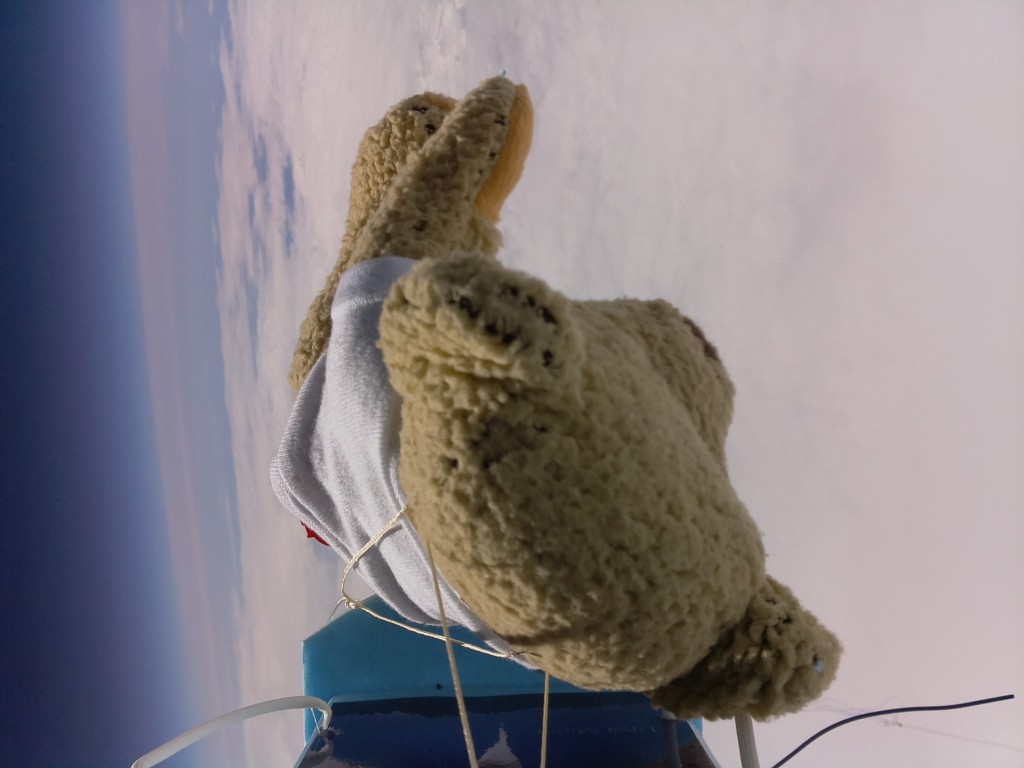

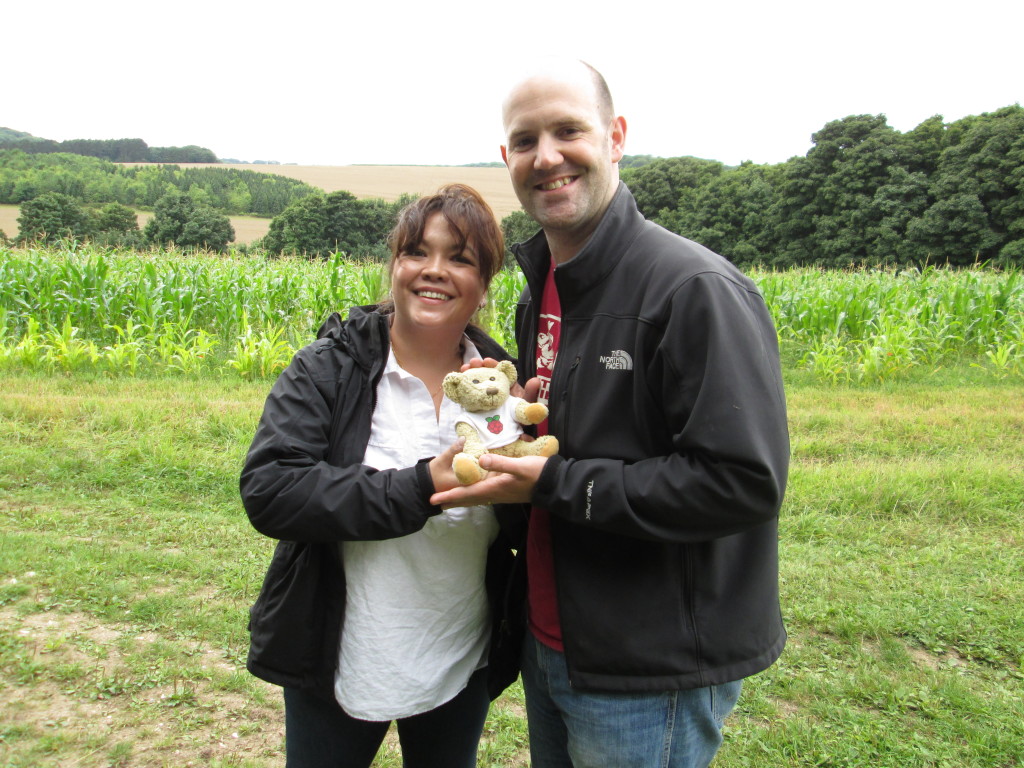
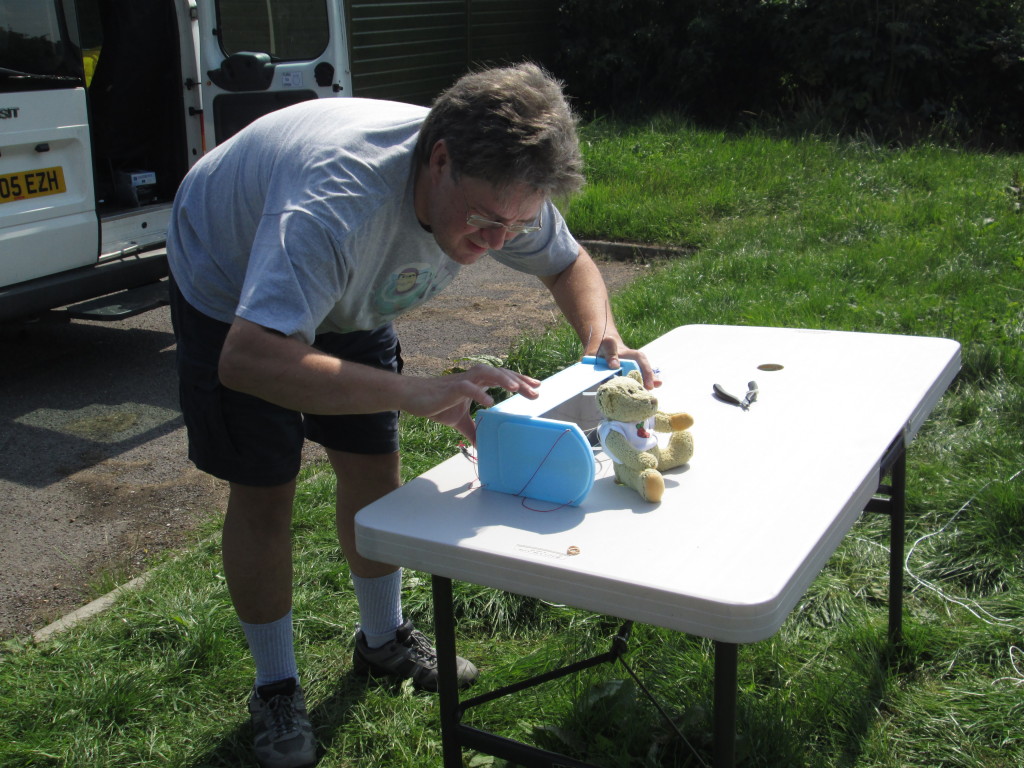
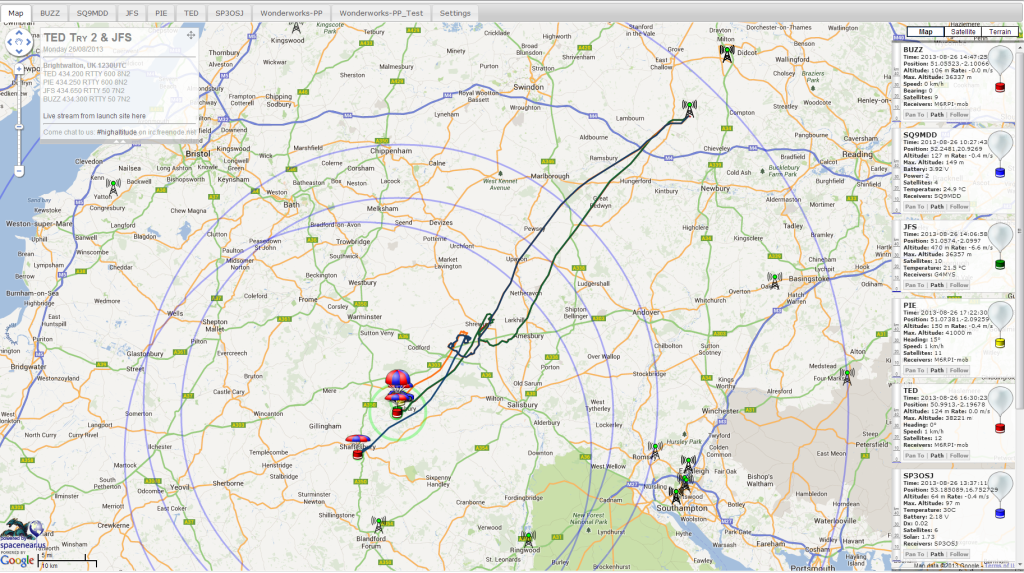


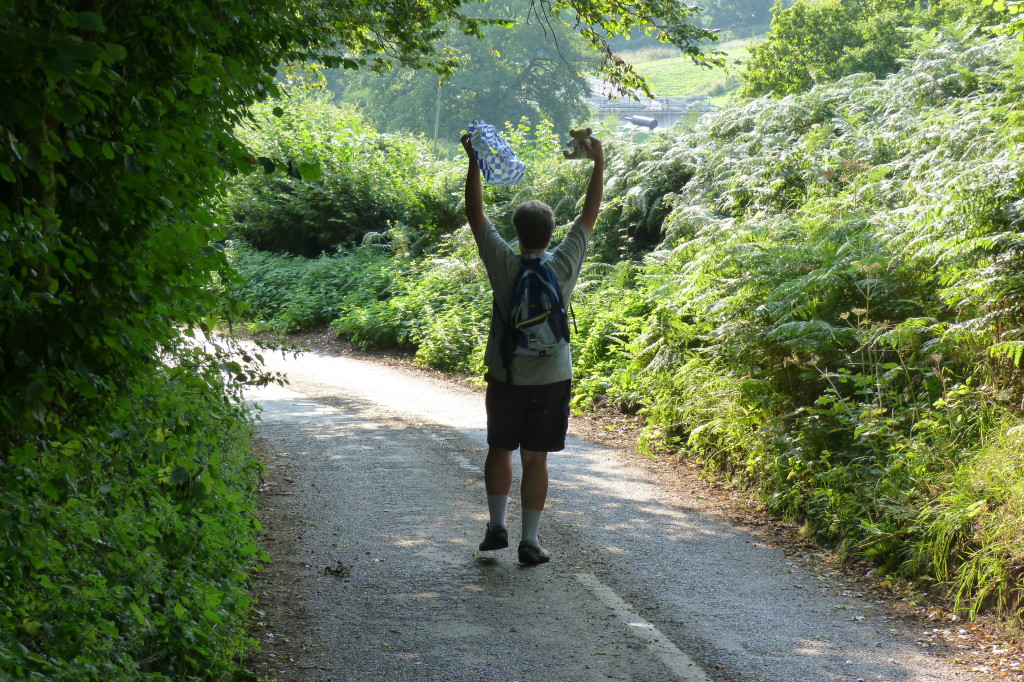
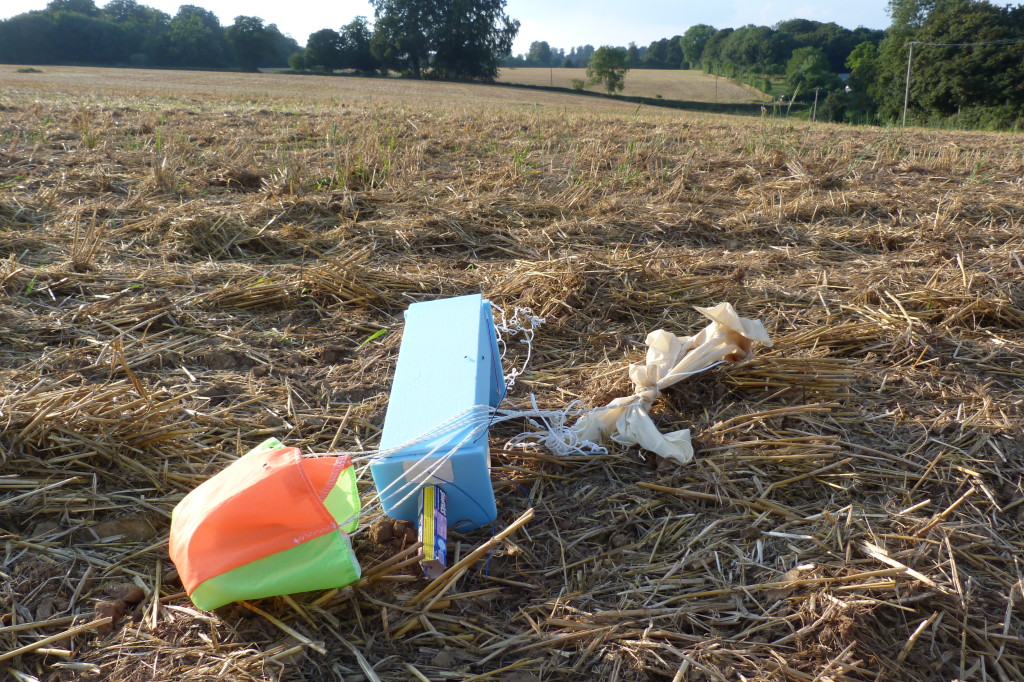
Congratulations on your achievement with this Dave – absolutely inspirational 🙂
Congratulations for the well planned and done experiment.
Babbage makes Felix Baumgartner look like a wimpy kid! 🙂
… one more …
This is a brilliant web site to plan the balloons propagation
http://predict.habhub.org/ for individual sites
It also offers pre-calculated landing areas for weather sites, which give you a good idea for the perfect timing … e.g. around my area
http://predict.habhub.org/hourly/stuttgart/
http://predict.habhub.org/hourly/muenchen/
http://predict.habhub.org/hourly/altenstadt/
Have no clue which British launch sites are available … you have to try different URLs.